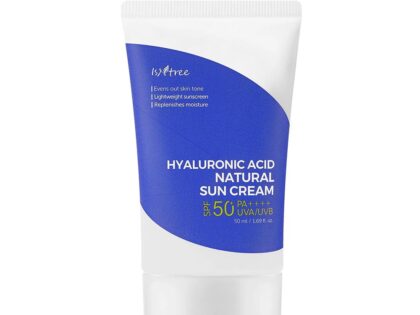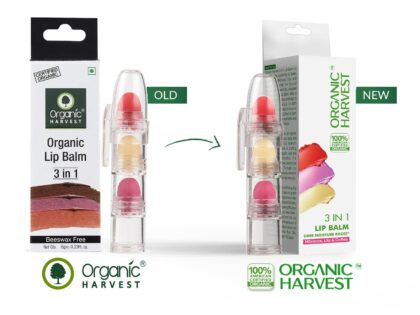Understanding Natural Sun Screens: Benefits and Options

As awareness of environmental sustainability and skin health grows, many individuals are turning to natural sun screens as an appealing alternative to traditional chemical-based products. These formulations, frequently enough derived from minerals and botanicals, aim to provide effective UV protection while minimizing potential skin irritations and environmental impacts. In this article, we will explore the benefits of natural sun screens, including their safety profiles and suitability for various skin types. Additionally, we will examine the different options available in the market, helping consumers make informed choices that align with their values and skin care needs. Whether you are seeking a gentle solution for sensitive skin or an eco-kind product for outdoor adventures,understanding the range of natural sun screens can empower you to protect your skin and the planet.
Benefits of Natural Sunscreens for Skin Health
Natural sunscreens offer a plethora of benefits that go beyond simple sun protection,substantially enhancing overall skin health. Unlike chemical sunscreens that can irritate sensitive skin types, natural formulations often contain mineral-based ingredients such as zinc oxide or titanium dioxide. These minerals provide a physical barrier that reflects UV rays, minimizing the risk of sunburn while preventing skin aging caused by prolonged sun exposure. Additionally, many natural sunscreens are enriched with nourishing components, including antioxidants and plant extracts, which help to soothe and hydrate the skin.This combination of protection and nourishment contributes to a more radiant and healthier complexion.
Using natural sunscreens can also lead to fewer adverse reactions for individuals with sensitive skin or conditions like eczema and rosacea. Because they are often free from synthetic fragrances, parabens, and harsh chemicals, these products are less likely to cause breakouts or allergic reactions. Furthermore, when opting for eco-friendly and organic certifications, consumers can support sustainable practices that benefit not only their own skin but also the habitat.In a market increasingly aware of the need for cleaner beauty options, natural sunscreens represent a conscientious choice for both personal care and environmental responsibility.
Key Ingredients to look for in Natural Sunscreens
When selecting a natural sunscreen, it’s essential to focus on certain key ingredients that provide effective protection without harmful chemicals. Look for zinc oxide and titanium dioxide, which are physical blockers that reflect UV rays rather than absorb them. These minerals are frequently enough preferable for sensitive skin, as they are less likely to cause irritation. Additionally, consider products that incorporate antioxidants like vitamin E or green tea extract, as they can help combat free radicals generated by sun exposure, enhancing your skin’s defense.
Furthermore, natural moisturizers such as aloe vera, coconut oil, and shea butter not only hydrate the skin but also assist in enhancing the application texture of the sunscreen. This can make the product feel more pleasant during use.It’s also beneficial to choose sunscreens that are reef-safe,avoiding ingredients like oxybenzone and octinoxate,which have been shown to harm marine ecosystems. Checking for these ingredients can lead to a more eco-friendly option while ensuring your skin stays protected.
Comparing Mineral Versus chemical Sunscreens
When choosing a sunscreen, understanding the differences between mineral and chemical formulations is essential for both skin health and performance under sun exposure. Mineral sunscreens, which primarily contain ingredients like zinc oxide and titanium dioxide, work by sitting on the skin’s surface and physically blocking harmful UV rays. This characteristic makes them less likely to cause irritation, making them a suitable option for sensitive skin. Moreover, mineral sunscreens tend to have immediate effectiveness upon application, unlike their chemical counterparts, which require a waiting period before sun exposure to activate. For those concerned about environmental impact, mineral options are also considered reef-safe as they do not contain harmful chemicals associated with coral bleaching.
On the other hand, chemical sunscreens utilize organic compounds, such as avobenzone and octisalate, to absorb UV radiation and convert it into heat, which is then released from the body. This type of sunscreen often has a lighter feel on the skin and can be easier to apply, as they typically blend into the skin more seamlessly than mineral options. However, ingredients in chemical formulations can sometimes cause skin irritation or allergic reactions, particularly for individuals with sensitive skin. an critically important consideration for consumers is the potential for bioaccumulation of some chemical ingredients, raising concerns over long-term safety and environmental efficacy.
Choosing the Right Natural Sunscreen for Your Lifestyle
When it comes to selecting a natural sunscreen, it’s essential to consider your unique lifestyle and skin type to ensure optimal protection and comfort. Broad-spectrum protection is a must, meaning it shields you from both UVA and UVB rays. Identify whether you prefer a lotion, stick, or spray formulation, as each has its advantages. For instance, if you lead an active lifestyle, a water-resistant option may serve you well, especially for outdoor activities like swimming or sports. Additionally, if you have sensitive skin, look for products that are free from synthetic fragrances and contain soothing ingredients like aloe vera or chamomile to prevent irritation.
It’s also important to consider the SPF level that suits your activities.For daily wear, an SPF of 30 can be adequate, while extended outdoor exposure might necessitate higher protection. evaluate the ingredients list to avoid potentially harmful elements such as oxybenzone, especially if you’re concerned about environmental impact. Below is a fast reference table that highlights popular types of natural sunscreens to help guide your selection:
| Type | Best For | Key Ingredients |
|---|---|---|
| Physical (Mineral) | Sensitive skin | Zinc oxide, titanium dioxide |
| Organic | Eco-conscious users | Plant extracts, natural oils |
| Tinted | makeup wearers | Minerals, iron oxides |
| Spray | Active lifestyles | Coconut oil, aloe vera |
Q&A
Q&A: Understanding Natural Sun Screens: Benefits and Options
Q1: What are natural sunscreens?
A1: Natural sunscreens are sun protection products formulated using minerals and plant-based ingredients as opposed to synthetic chemicals. They primarily contain active mineral ingredients like zinc oxide and titanium dioxide, which physically block UV radiation from penetrating the skin.
Q2: What are the key benefits of using natural sunscreens?
A2: The benefits of natural sunscreens include:
- Mineral-Based Protection: they provide broad-spectrum protection against both UVA and UVB rays by reflecting sunlight.
- Less Irritation: Natural ingredients are often gentler on the skin and less likely to cause allergic reactions or irritate sensitive skin.
- Eco-Friendly Options: Many natural sunscreens are formulated with biodegradable ingredients, making them more environmentally friendly.
- Non-Toxic: They typically avoid harmful chemicals such as oxybenzone, octinoxate, parabens, and phthalates, which can be absorbed into the skin.
Q3: How do I choose a natural sunscreen?
A3: When selecting a natural sunscreen, consider the following:
- SPF Rating: Look for a broad-spectrum sunscreen with SPF 30 or higher for effective protection.
- Active Ingredients: Ensure the main active ingredients are zinc oxide or titanium dioxide for mineral-based protection.
- Skin Type Compatibility: Choose a formulation that suits your skin type,whether it’s oily,dry,or sensitive.
- Water Resistance: If you’ll be swimming or sweating, select a water-resistant option for extended protection.
Q4: Are there any disadvantages to natural sunscreens?
A4: While natural sunscreens are often safer for skin and the environment, they may have some drawbacks, including:
- White Cast: Mineral formulations can leave a noticeable white residue on the skin, particularly on darker skin tones.
- Thicker Consistency: They may be thicker and less spreadable compared to chemical sunscreens, which can make application more challenging.
- Effectiveness When Not Applied Generously: Users must apply adequate amounts to achieve the indicated SPF, which is frequently enough less than what is typically used.
Q5: How should I apply natural sunscreen for optimal protection?
A5: To ensure optimal protection with natural sunscreen:
- Apply Generously: use about an ounce (a shot glass full) for full body coverage, reapplying every two hours or more frequently if swimming or sweating.
- Apply before Sun Exposure: Apply sunscreen at least 15 minutes before sun exposure to allow it to bind to the skin.
- Don’t Forget Commonly Missed Areas: ensure you cover areas often overlooked, such as the ears, back of the neck, and scalp.
Q6: Can natural sunscreens be used by everyone?
A6: Generally, natural sunscreens are suitable for all skin types, including sensitive skin.Though, it’s always advisable to perform a patch test before widespread use, especially for individuals with a history of allergies or skin sensitivities.
Q7: What about the environmental impact of natural sunscreens?
A7: Many natural sunscreens aim to reduce their environmental footprint by using biodegradable ingredients and avoiding harmful chemicals that can damage marine ecosystems. When choosing a sunscreen, look for products labeled as reef-safe.
Q8: how do I store and preserve natural sunscreen?
A8: To maximize the effectiveness of natural sunscreen:
- Store in a cool,dry place away from direct sunlight to prevent degradation of the active ingredients.
- Check Expiry Dates: Natural sunscreens may have a shorter shelf life than conventional products due to the absence of preservatives.
By understanding natural sunscreens, their benefits, and how to select the right products, you can better protect your skin while minimizing potential health risks and environmental impact.
The Conclusion
understanding natural sunscreens is essential for making informed choices about sun protection. As we have explored, natural sunscreens are formulated with mineral ingredients that provide effective defense against harmful UV rays, while often being gentler on the skin and the environment compared to their chemical counterparts. By considering the benefits of these products, such as reduced risk of skin irritation and environmental sustainability, consumers can choose options that align with their personal values and skin care needs.
As the demand for safer and eco-friendly beauty options continues to grow, it is important to stay informed about the various formulations available. Whether you opt for a mineral-based lotion, stick, or spray, being aware of the different ingredients, application methods, and broad-spectrum protection will help you safeguard your skin effectively. Ultimately, prioritizing sun protection through informed choices can lead to healthier skin and a greater gratitude for our planet. Remember to always patch test new products and consult with a dermatologist for personalized recommendations. With the right natural sunscreen,you can enjoy the outdoors with confidence and care.





